Riding a bicycle in the Netherlands is one of THE main reasons why people are so happy here. But there are some rules you need to get used to.
Before moving to the Netherlands, many of us lived in a place with no biking infrastructure (or at least, one that cannot be compared to the Netherlands’).
Riding a bicycle to work was basically asking for a shorter life, and being stuck in traffic in a car was as common as breathing.
But hooray! Once you move to the Netherlands, you’re putting those days behind you, and now you can go everywhere with your trusty fiets! 🚲
And sure enough, after a while of biking, you’ll notice that there are some important do’s and don’ts of riding a bicycle in the Netherlands. 👇
This post might have affiliate links that help us write the articles you love, at no extra cost to you. Read our statement.
Legal requirements for riding a bicycle in the Netherlands
In a country that built its cities with bikes in mind, you won’t be surprised that the legal system has also been shaped around cycle culture. Here are some legal requirements to note to avoid getting a fine.
Don’t ride under the influence (RUI)
Despite what most Dutchies (and us internationals 👀) do, it is actually illegal to ride your bike drunk or stoned. If caught, you can get a hefty fine. How hefty? Well, up to a whopping €200!
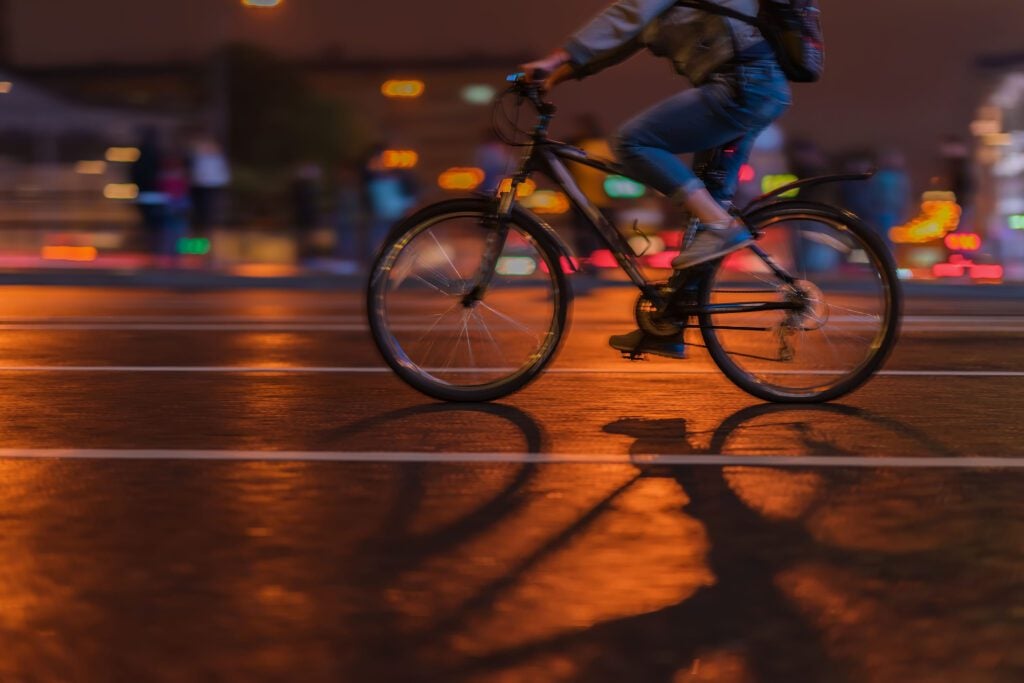
READ MORE | 7 things that will get you fined while cycling in the Netherlands
Riding drunk is dangerous, no matter what type of bike you’re on. So, no drinking and biking!
Get yourself a bicycle bell
Step outside in a Dutch city, and within a few minutes, you’ll hear it: the “tring-tring” of a bike bell. Romantic at first — then slightly annoying.
But alas, every bike should have a bike bell; it’s compulsory. They let you know when someone is behind you and wants to overtake you or if you’re in the way. It’s very handy and much more polite than being yelled at by an angry Dutchie.
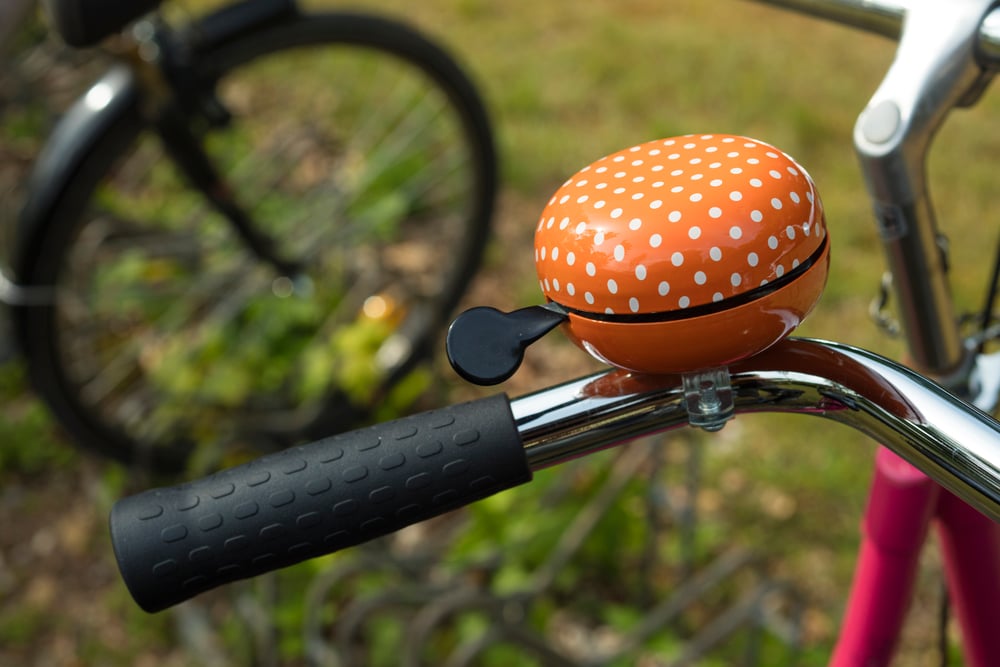
Use your bright lights
If you’re riding at night, you must use a properly attached white or yellow light on the front of your bicycle and a red light on the back. Not having a light can result in… you guessed it, a fine. Also, worse, it could result in a car running you over.
READ MORE | Dutch Quirk #60: Have ginormous bike parking lots
Bicycle lights are very easy to find, and you can purchase some very cheap ones at Hema or Action. If you get detachable ones, make sure you take them with you when you park. Stealing bike lights is the top Dutch national pastime (right after getting cheap groceries).
Signal before you turn on your bike
I think the first time somebody yelled “lul!” at me, was when I did a tight turn with 10 high schoolers behind me. At first, I thought it was the Dutch variant of “lol.” Naturally, because I’m hilarious.
But then I realised I had been called a d*** because I had not signalled before I turned a corner. Oops.
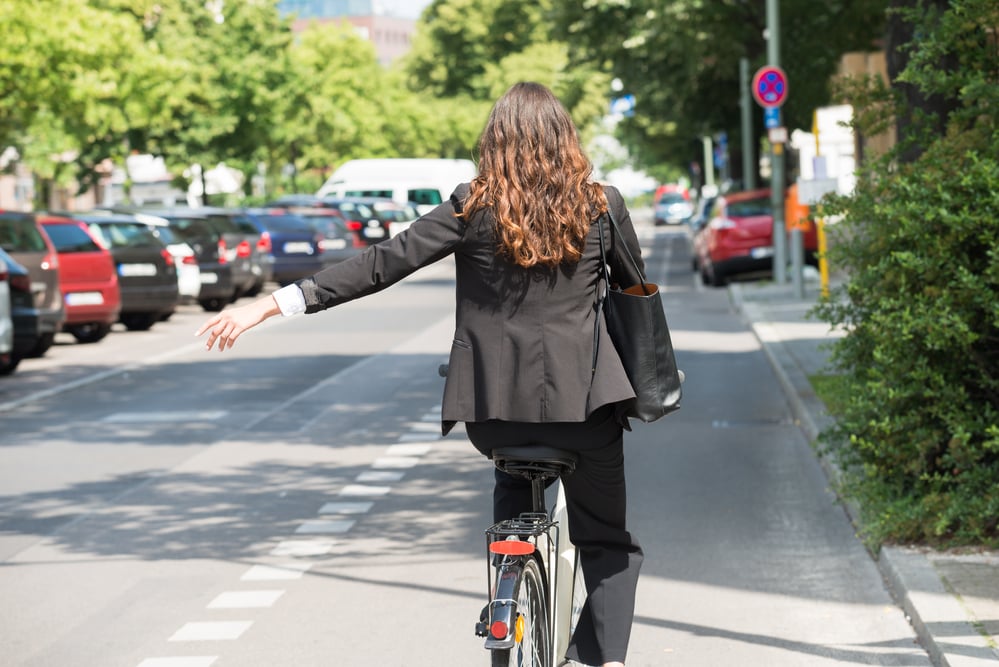
Now, after being the cyclist stuck behind someone who doesn’t signal a couple of times, I understand how important it is!
If you want to go left or right on your bike, stick your left or right hand accordingly! This lets non-psychic people know what direction you’re turning towards, makes traffic more fluid, and prevents any name-calling that may hurt your feelings.
Do not text and cycle
Much like you shouldn’t text while driving, you also shouldn’t text while cycling. At first, this was only discouraged among Dutchies — have you seen them cycle?
Either way, your phone can wait, but that pothole or moving tram won’t. So, keep your hands on the handlebars and your eyes on the road, or you might end up texting your friends from the emergency room instead of the park. ☝️
What’s good to know when cycling?
That’s enough on the law. Let’s discuss some helpful tips for things like not getting your bike stolen. 😉
Put a lock on it — properly!
It’s surprising how many people get their bikes stolen because they don’t know how to put a bike lock on properly. Now you might say, “C’mon, that’s easy! Besides, nobody steals anything in this country.” Well, that’s where you’re wrong.
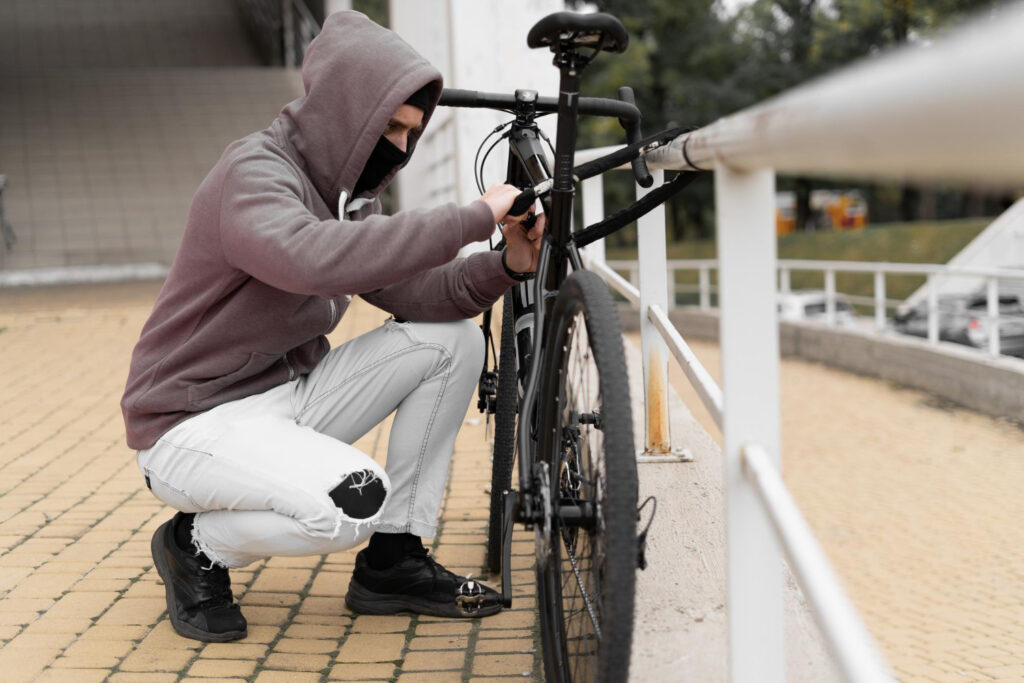
If you want to cheap out on something while living here, it better not be your bike lock! Although there are many types of locks out there, U-locks and sturdy chain locks are the best.
READ MORE | 24 TikToks explaining why the Dutch are ahead of their time with bikes
Also, there is a proper way to lock your bike. You should always lock your bike to a pole or biking rack, and your lock should surround your frame and your tyre.
Tip: If you fear your bike will get stolen (which is a very significant possibility), the best thing to do is to take out bike insurance. Yep, that’s a thing here!
Don’t have bike insurance yet? We recommend Univé for their bike and e-bike insurance. 🚲
Don’t buy €10 bikes in alleyways
Who doesn’t dream of buying a cheap bike after moving to an expensive city? But any bicycles you buy from shady guys in the inner city are probably stolen.
If you’re buying a stolen bike, you’re supporting and boosting the stolen bike market. This perpetuates the cycle and might even end in your newfound stolen bike getting stolen again. So, don’t do it.
READ MORE | Where to buy a bike in the Netherlands: the ultimate beginner’s guide
The Netherlands is filled with second-hand bicycle shops. While a second-hand bike shop will not sell bicycles for €10, there are many affordable and fair options.
Get your head in a helmet — maybe
Wearing a helmet while biking is important because it protects your brain in the case of an accident, and brains are important.
Although not compulsory, and although there’s a big helmet/no helmet debate, we recommend wearing a helmet — at least if you cycle really fast.
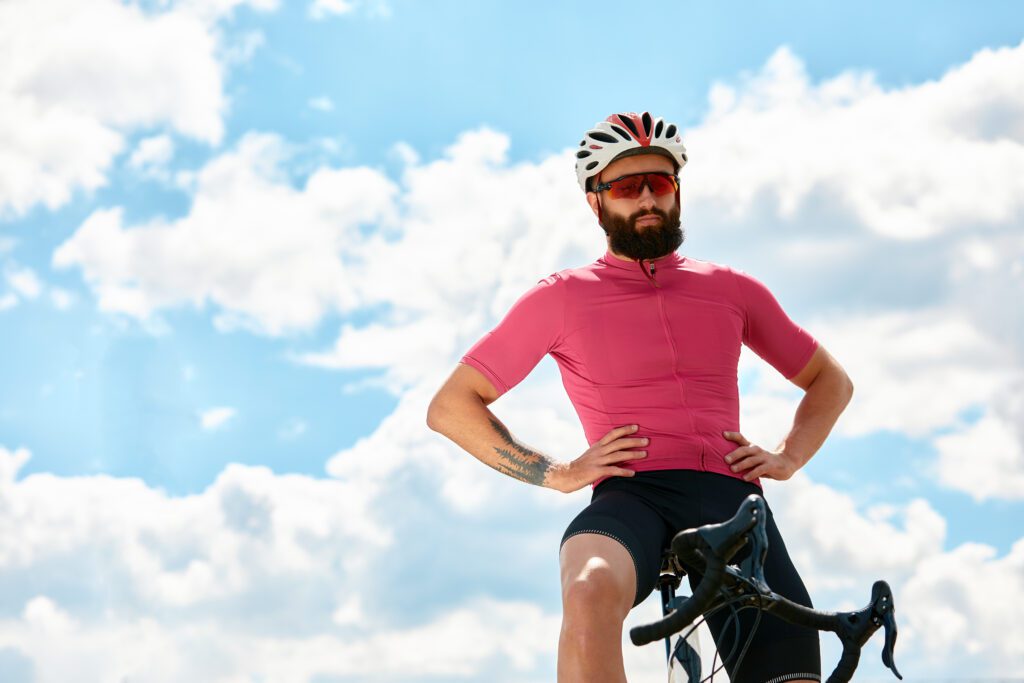
It would appear that the traffic infrastructure and a superb biking culture are better than enforcing helmet laws, though. The Netherlands (right after Denmark) is the European country with the fewest accidents that result in cyclists dying. Maybe that’s why not many Dutchies wear helmets.
So wear a helmet! Or not! It’s your choice.
Pay attention when wearing headphones
There are two things we love doing but we know we shouldn’t do. One of them is having Ben & Jerry’s cookie dough ice cream for breakfast every morning, and the other is riding our bicycle while listening to music.
While it’s not technically illegal to ride your bike while listening to some Iron Maiden on your headphones, it can be detrimental to your health. By detrimental to your health, we mean not hearing a bus and getting run over by it.
READ MORE | How to use your bike like a real Dutchie: from trampling pedestrians to running red lights
So, like the helmet thing, it’s not illegal, but it is highly recommended that you do not listen to music while riding your bike.
Read and respect the traffic signs
Lastly, there are three things you should always keep in mind when riding your bicycle: signs, pedestrians, and tram lines. There’s a wide range of road signs that you need to keep an eye out for.
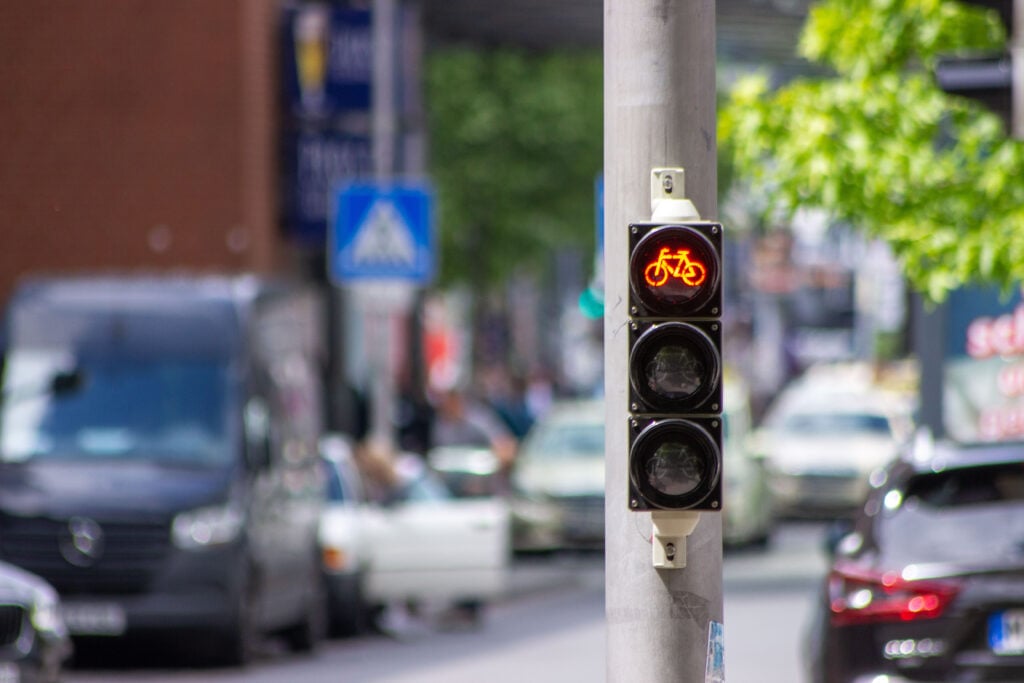
Four of the most important ones to recognise are:
- uitgezondered fietsers (except people on bicycles);
- rechtsaf voor fietsers vrij (right turn free for bikers);
- let op! Uitrit bouwverkeer (watch out for construction traffic);
- and “pedestrian zebras” (pedestrian crossings).
If you see a white sign with a red line around the edge (no entrance), but it is followed by uitgezondered fietsers, you may follow that road — if you’re on a bike, of course.
You’ll also see blue signs with white letters reading rechtsaf fietsers vrij. These mean “right turn free for bikers.” So even if they’re next to a red traffic light, if you’re on a bike, you can turn right freely — just remember to signal!
Tram lines: criss-cross
There are three things I have deep and crippling fears towards: spiders, that one scene in Lord of The Rings: The Fellowship of The Ring, and crossing a tram line while I’m on my bicycle.
No matter how many times I’ve done it, my pulse skyrockets when I have to cross a tram line. If you fall in one, it’s almost a guarantee you will fall embarrassingly.
The best way to cross a tram line while riding a bicycle in the Netherlands is to cross one as perpendicularly as possible. Here’s a handy picture to save your life in the future.
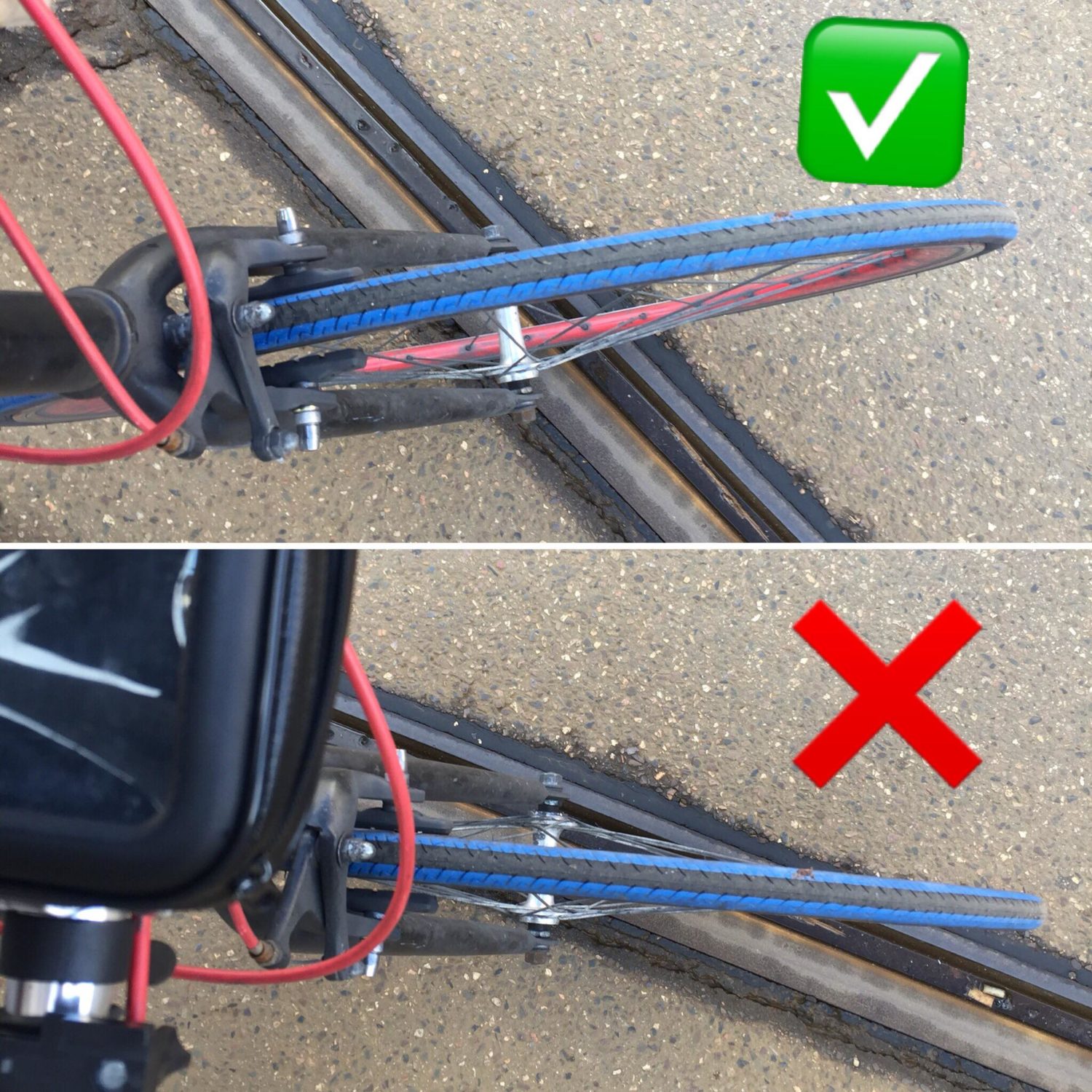
Well, that’s about it for the do’s and don’ts of riding a bicycle in the Netherlands. Hopefully, you’ll find this list useful if you’re new to this charming little country. Riding a bicycle here is easy and incredibly safe.
But of course, if you keep these handy tips in mind, we’re confident your biking experience will be considerably better.
Did we miss any important do’s or don’ts? If we did, tell us in the comments below!




Hola Renan!
You forgot to mention parking spots! A friend got his bike taken away for parking it somewhere where it wasn’t allowed. He didn’t understand the sign text, and it was pretty small also (and suspiciously far away from the actual spot where he left it).
The whole process of taking it back (and the risk of getting caught then if it is a stolen bike) could be worth reading in your guide!
Kudos for the article, btw 🙂
PD: Mexican girl here o/
Hola Iris!
I definitely forgot about that! “geen brom- fietsen plaatsen” is for sure an important one to know. And yes, those signs are all in Dutch and sometimes crazy small. Although I have seen a bunch of illustration ones, like the “no bike” drawing.
Saludos paisana!
Riding side by side on a narrow path: Admit it. The only good reason to do this is because you want to have a chat while riding. Which implies that you will probably be cycling slower than the average. So you become an annoyance to everyone else who have to either cycle on your pace, or manoeuvre to overtake you.
Aw man, I really hate that too!! Although I do it sometimes… BUT, when I am doing it, I make sure to move aside when needed… But for sure annoying! That’s why bells are amazing and useful.
10 yrs of life in NL here; pretty well rounded article.
Agree with Iris plus some extra info: when your bike gets taken ( and assuming you locked it properly as shown above); then it has been brought to a special bike depo. You have 6 weeks to claim your bike at this place, after checking for it on their website ( just type “fiets kwijt” into Google and take it from there). Should you fail to get your bike back it will be sold.
You will pay € 25 upon picking it up. Cool eh ?
Definitely! Should have also added about locking your biking OUTSIDE of the bike racks on train stations… That sends your bike to those places where they keep’em!
You need to bring the key of your lock, to proof that the bike is yours.
Nice article Renan but you forgot to mention all the baby/child seats before and after the bicycle seat absolutely mandatory for transporting your children from the moment they take their first breath. !
And sorry only tourists on hire bikes and very small children wear helmets (other than Dutch cyclists in the Tour de France or racing clubs).
And I forgot to mention cycling with your dog alongside on a leash. If you can master that then you are well and truly Dutch especially if your weekly shopping is at the same time balanced in your shopping bags (fiets tassen) with of course a huge bouquet of flowers strapped to the front of your handlebars. The Dutch cyclists love to multi task.
I agree courtesy to pedestrians but you can be extremely rude to motorists!
Always carry a repair kit with you so you can fix a leaky tire. It goes without saying that it should be accompanied by a pump…
(I used to live in Nederland and not in a big city so had to do a lot of repairs or walk long ways!)
In winter you need lights in the morning too. Everyone goes to school and work when it’s still pitch dark outside.
About locking bikes: there are two sayings that I hear a lot in Amsterdam:
1. Bikes are public property, locks are just a challenge.
2. Your bike is safe as long as it has better/more locks than the one next to it
Hello Renan. Lisbon, apart from many other problems (specially the hilly city), we also have the tram line problem. And even more: train lines! With a road bike, it is scary to cross them. Once, while following a car on a wet day and going down a bit faster than I should, I suddenly remembered the existence of a tram line, but it was too late. I went down like a pine tree, and then, while trying to get up, I slipped on the lines and twisted a thumb. Only noticed some minutes after, while waiting for a train.
You already mentioned signalling when you change direction but there’s something even more important while negotiating traffic on your bike and it’s something that’s not easy to master: expressing your intentions and identifying those of others. You can compare it to people on sidewalks. They’ll subconsciously try to anticipate the movements and turns others will make, based on their body language. There are many subtle (and less subtle) signs that let you fathom the other’s next move.
Cyclist will generally turn their head toward their intended direction. So even is someone is coming straight towards you, if they have their heads turned slightly to the left or right, you can bet they will soon turn that way. Also, if they keep left on the cycle path, they will probably turn left at the next crossing.
In busy cities like Amsterdam or Utrecht (which has the busiest stretch of cycle lane in the world!), you can try to bike around just following the rules, but chances are that you’ll be either called names or get into unexpected trouble, needing to escape to the sidewalk. When thousands of cyclists all want to negotiate the same lane at one time, it’s the little signs of intentions that you need to be able to identify and, in return you need to show these yourself.
I had a friend over from Germany and she stood ten minutes waiting to cross a road, yet couldn’t find a safe opening. The reason: she stood there and didn’t move. I learned her that she had to point her face to where she was going and start to move, even if only slowly. Others will notice and will give her a chance to cross. And if they don’t, you have to just muscle your way through, knowing that eventually people will hit their brake. But you must make your intentions clear and keep moving, otherwise no one can anticipate what you’re about to do and clear the way.
When you turn left first look backwards!!!!!!!and than give a signal and if you can go left
If your lock is more expensive than your bike: that is fine because you will need a good lock. Abus for instance is a good, sturdy brand.
If you have children and let them wear a helmet when they ride to school, they will be teased relentlessly by their classmates (“Haha! You can’t even ride a bicycle and you look stupid too!”) In any case in cities it’s social suicide.
Having a child in a bikechair on the back, a smaller child in a different model bikechair on the front and your big bags of groceries hanging from the handles is pretty normal. Just about al Dutch parents (mostly mothers) do it. A bicycle is for leisuretime and for daily traffic both.
Be prepared for that in cities in traffic bicyclers are treated with more “respect” than others. Which means: everybody knows that in cities bikers often don’t stop for you when you want to cross the bikepath. Cars might, bicyclists won’t (neither does the tram) If you cross a bikepath as a pedestrian be clear about your intentions (bodylanguage) and be swift. Otherwise you will get yelled at. No lingering on bikepaths! As a biker you are in the right if you chase pedestrians off the bikepath.
Being drunk or stoned on a bicycle might not be allowed but everyone does it after an alcoholic night out. Expect it and anticipate on it if you are a pedestrian. Bikers expect it of you, also when they can hardly see where they are going anymore.
Ah yes… if you are that drunk / stoned cyclist, beware of poles or cement obstacles on some bikepaths. If you ignore them, you might loose your teeth as you fly over your handles and smack on the pavement. The band Skik from the province Drenthe even wrote a song in Drents dialect about it called Betonpoalties Ben Kut
As a tourist cycling in The Netherlands could you please let me know the etiquette with regard to cycling at cross roads in a city? Who has right of way and from which direction please?
Continuously convey a fixed unit with you so you can fix a defective tire. It’s implied that it ought to be joined by a siphon. Thanks for posting us such a valuable post. Keep writing. You can see here if your bike needs any wrecked issue. https://thereviewerpro.com/best-welding-helmet-review/
Zebras – Stop for pedestrians agree. Do I have to stop for someone on their bike waiting to use the zebra?
No. Pedestrians have right of way on zebras. Cyclists don’t. And neither do cars of busses using zebras 🙂
They don’t belong there.
If you are so Lazarus drunk on your fiets, and the police stop you, one of the first things they ask for is your drivers license. And you can lose it!
People here (young people mostly) ride their bikes like lunatics. I wish there were more checks on the bike paths.
Such an amazing article. Nowadays, It’s so hard to see something informative like this article. Such an informative article and straight to the point. Keep this up.
There are triangles on the bike paths that intersect. If the triangle points towards you, you need to yield to oncoming bike traffic (I noticed this missing in the article). However there are other markings that I will need to learn what they mean…
90% of cyclists here totally ignore zebra crossings
Hi, Que hay acerca de tener una bici de montaña, de esas ultra equipadas, pues es la misma que usas cuando vas de paseo como cabra al monte. Es mas probable te la roben? aun amarrada con tres candados a la puerta neeeegra jajaja
O deberias tener una para moverte en la ciudad y la especial para la montaña. Gracias y Salud….os
Hi, What about a Mountain Bike, ultra-pro, those that you use like a goat in the mountain. It is more probable to be stolen? even with 3 locks .
Or you should use a simple bike at cities and use the goat for the mountain. Thank you and keep healthy
Great post! Are bicycle lights required during daytime when visibility is low?
Great post!
Only one thing: cars not necessarily should stop for bikers, and it needs only one that won’t stop to make a tragic accident. Most times there are shark teeth or other priority traffic rules that apply, and bikes should stop when the car has priority. I see some cyclists just ignoring these rules, but in the NL if there is a clash between a cyclist and a car, and the cyclist is wrong, besides being the most vulnerable in an accident, the biker has to take accountability on what he did (not the car), unless it was a child in the bike.
I love reading about the Dutch cycling culture! I’m from the US and I’ve been trying to learn more about cycling here, so this post was really helpful. Thanks for writing it!
Don’t ride your bike in a pedestrian-only zone. You will be fined if a police officer sees you.
I find the hardest lock is that really thick chain. It takes around a minute with a powerful.. forgot name.. .the metal grinder with spikes. The hassle is: it weighs A LOT. Mine weighs over 3kg, which is quite a nuisance to bring around. It also costs a lot (around 100-110 euros). As a long-term investment, you can also apply a gps tracker+camera intelligently disguised, and connected to your phone. It’s expensive but it can give you great peace of mind. And you can apply it also to other things, doesn’t have to be stuck on the bicycle forever.
Regarding your test: “They let you know when someone is behind you and wants to overtake you or if you’re in the way.” This is NOT TRUE! Only in emergency you use your cycling bell and NOT when you want to overtake somebody. I ran into 4 tourists, they kept on ringing, I told them to STOP doing this. I hope they listened and listen, bc it is super annoying!!
All your cycling posts seem like they’re written by people who have never stepped foot on a bicycle in the Netherlands. Even your pictures leave a lot to be desired, stock photos of people in who are not even in the country.